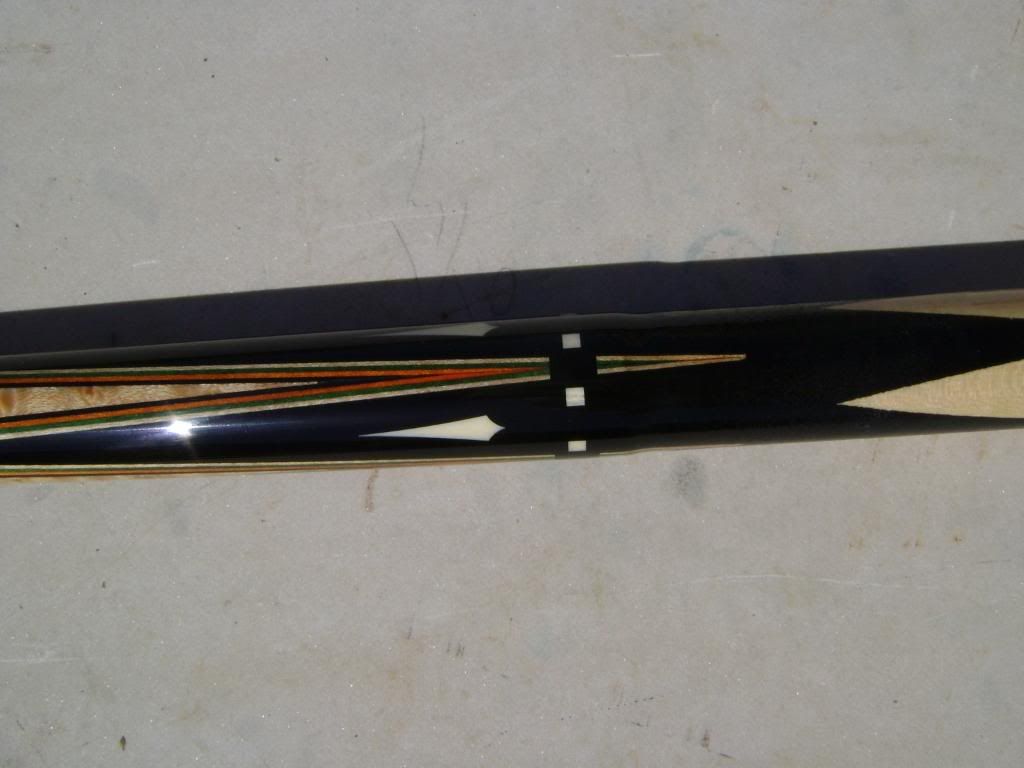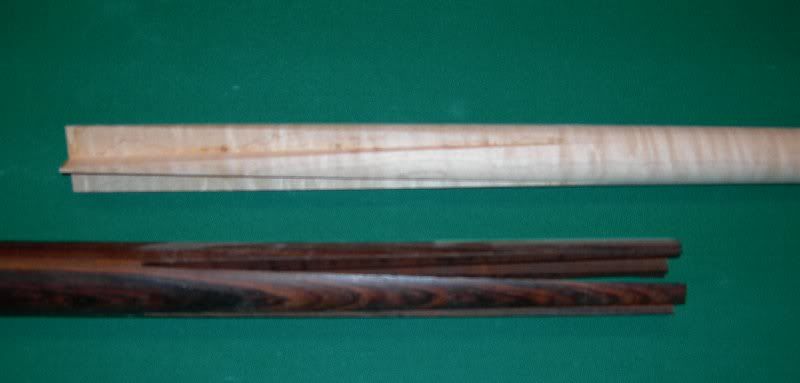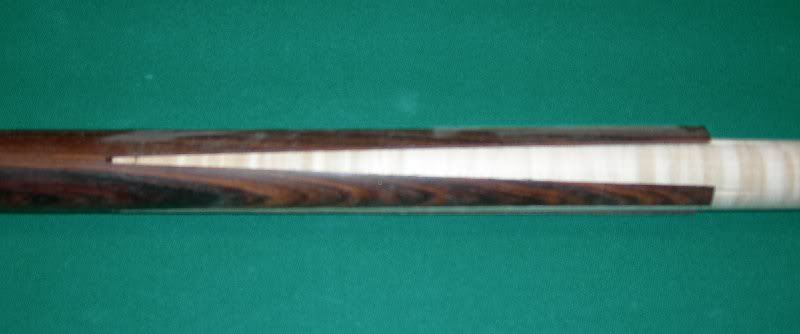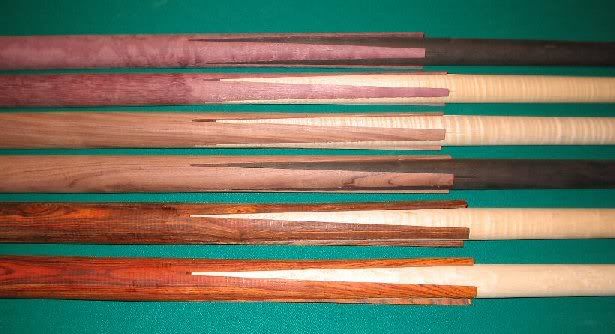Dear Cuemakers,
i was searching threw this forum for some hours to find a perfect explanation for the difference between these.
I have all Blue Books, all Billiard Encycolpedias, i read Mark Bears description ( http://www.bearcues.com/fullsplicecue.htm ), but i still don´t catch it exactly.
Maybe my english is not good enough or maybe i am a little idiot, but i hope you can explain it to me, so that i catch it, too. :thumbup:
Is it correct that a FULL SPLICE CUE has to be a TWO PIECE CUE ONLY ?
That there has to be no screwing or anything like it in the Cue ?
The two parts of the cue (not counting shafts) are glued together at the points (with or without veneers) ?
So that the bottom part of the Splice used, has to go down all the way until the Butt Cap ?
Or, can somebody put a Butt piece with rings and inlays below the wrap area and we could still say it´s a FULL SPLICE CUE ??
Hopefuly you can help me, because i had a discussion about that for app. two hours - WOW - i am going crazy !
And it would be nice to know what is a Halfsplice or a Shortsplice, too.
Please help, best regards
Erich
i was searching threw this forum for some hours to find a perfect explanation for the difference between these.
I have all Blue Books, all Billiard Encycolpedias, i read Mark Bears description ( http://www.bearcues.com/fullsplicecue.htm ), but i still don´t catch it exactly.
Maybe my english is not good enough or maybe i am a little idiot, but i hope you can explain it to me, so that i catch it, too. :thumbup:
Is it correct that a FULL SPLICE CUE has to be a TWO PIECE CUE ONLY ?
That there has to be no screwing or anything like it in the Cue ?
The two parts of the cue (not counting shafts) are glued together at the points (with or without veneers) ?
So that the bottom part of the Splice used, has to go down all the way until the Butt Cap ?
Or, can somebody put a Butt piece with rings and inlays below the wrap area and we could still say it´s a FULL SPLICE CUE ??
Hopefuly you can help me, because i had a discussion about that for app. two hours - WOW - i am going crazy !
And it would be nice to know what is a Halfsplice or a Shortsplice, too.
Please help, best regards
Erich





